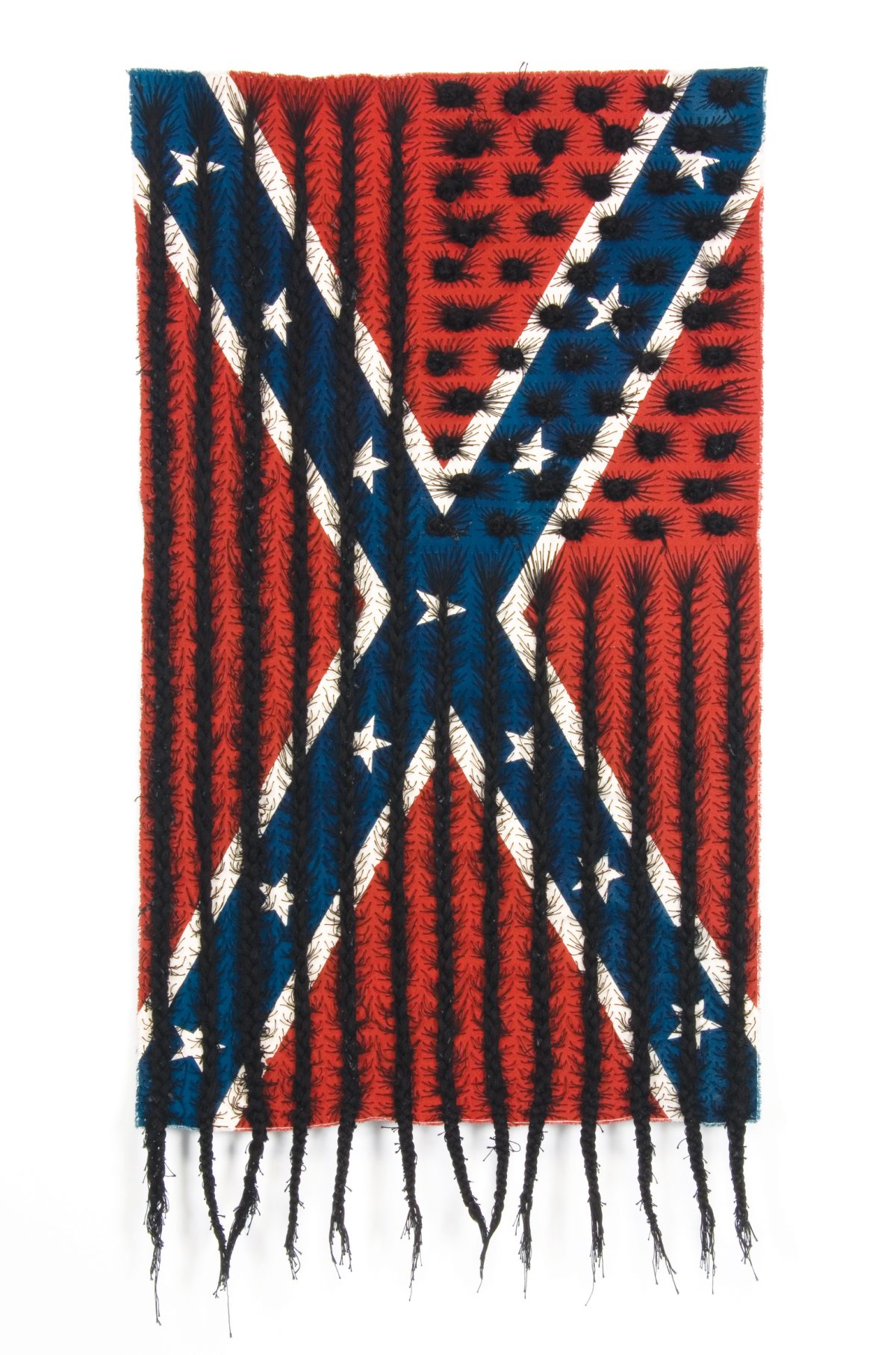art, Mixed Media, Uncategorized
Sonya Clark – American Mythology And Black Hair Meets Art

Sonya Clark, “Octoroon” (2018), canvas and thread, 85 3/8 x 38 ¼ x 2 in.; Chrysler Museum of Art, Norfolk, VA (image © Sonya Clark; image courtesy of the artist and Lisa Sette Gallery)
Sonya Clark Weaves Together American Mythology And Black Hair Into Art.

Sonya Clark, “Afro Abe II” (2010), five-dollar bill and thread, 4 x 6 in.; National Museum of Women in the Arts, Gift of Heather and Tony Podesta Collection (Photo © Sonya Clark; Photo by Lee Stalsworth)
In Afro Abe II, Sonya Clark transformed a U.S. five-dollar bill to reveal connections between money, power, and pride. Clark made her first two Afro Abe artworks in 2007 when then-Senator Barack Obama began his presidential campaign. Over the next five years, she created 42 additional Afro Abe pieces to honor his place as the 44th President of the United States of America. At the same time, the series lauds President Abraham Lincoln as an early civil rights leader.
Clark says, “I investigate simple objects as cultural interfaces. . . . What is the history of the object? How does it function? Why is it made of a certain material? How did its form evolve? These questions and their answers direct the structure, scale, and material choices in my work.”
Here, her use of currency-as-canvas evokes personal, cultural, and historical associations with money—freedom, self-determination, and property ownership. Further, U.S. currency is made primarily of cotton, a cash crop associated with slavery.
Crowning Lincoln with an embroidered Afro, a symbol of black political rebellion, resistance, and self-affirmation, infuses the bill with new meaning. This juxtaposition is both humorously incongruent and poignant.
 Sonya Clark, “Black Hair Flag” (2010), paint and thread on canvas, 52 x 26 in.; collection of Pamela K. and William A. Royall, Jr. (image © Sonya Clark; photo by Taylor Dabney)
Sonya Clark, “Black Hair Flag” (2010), paint and thread on canvas, 52 x 26 in.; collection of Pamela K. and William A. Royall, Jr. (image © Sonya Clark; photo by Taylor Dabney)
ABOUT WORK AND SONYA CLARK
Clark’s Jamaican mother and Trinidadian father of Yoruba descent informed her appreciation of diaspora and Afro-Caribbean traditions. Her maternal grandmother, a tailor from whom she learned to sew, and maternal grandfather, a skilled woodworker and furniture maker, further inspired the artist.
She has also studied with craftspeople in Australia, Brazil, China, Côte d’Ivoire, Ghana, India, and Indonesia to better understand the mediums, tools, techniques, and cultural associations that enrich her work.
Through her chosen materials—humble objects like combs, coins, seed beads, thin threads, and strands of human hair—Clark explores the various functions and connotations humans assign to things. “Objects have personal and cultural meaning because they absorb our stories and reflect our humanity back to us. My stories, your stories, our stories are held in the object,” says Clark.
She is best known for artwork that honors contemporary craftspeople like hairdressers and notable African American figures, including entrepreneur and activist Madam C.J. Walker and former President Barack Obama.
Clark has received the Anonymous Was A Woman Award (2016), ArtPrize Juried Grand Prize (co-winner, 2014), and Smithsonian Artist Research Fellowship (2010 and 2011). She was a Distinguished Research Fellow in the School of Arts at Virginia Commonwealth University where she served as chair for the Craft/Material Studies Department from 2006 until 2017. She is currently a Professor of Art at Amherst College in Massachusetts.

Sonya Clark, “Cotton to Hair” (2009), bronze, human hair, and cotton, 14 ½ x 12 ½ x 5 in.; National Museum of Women in the Arts, Gift of Heather and Tony Podesta Collection (image © Sonya Clark; photo by Lee Stalsworth)
